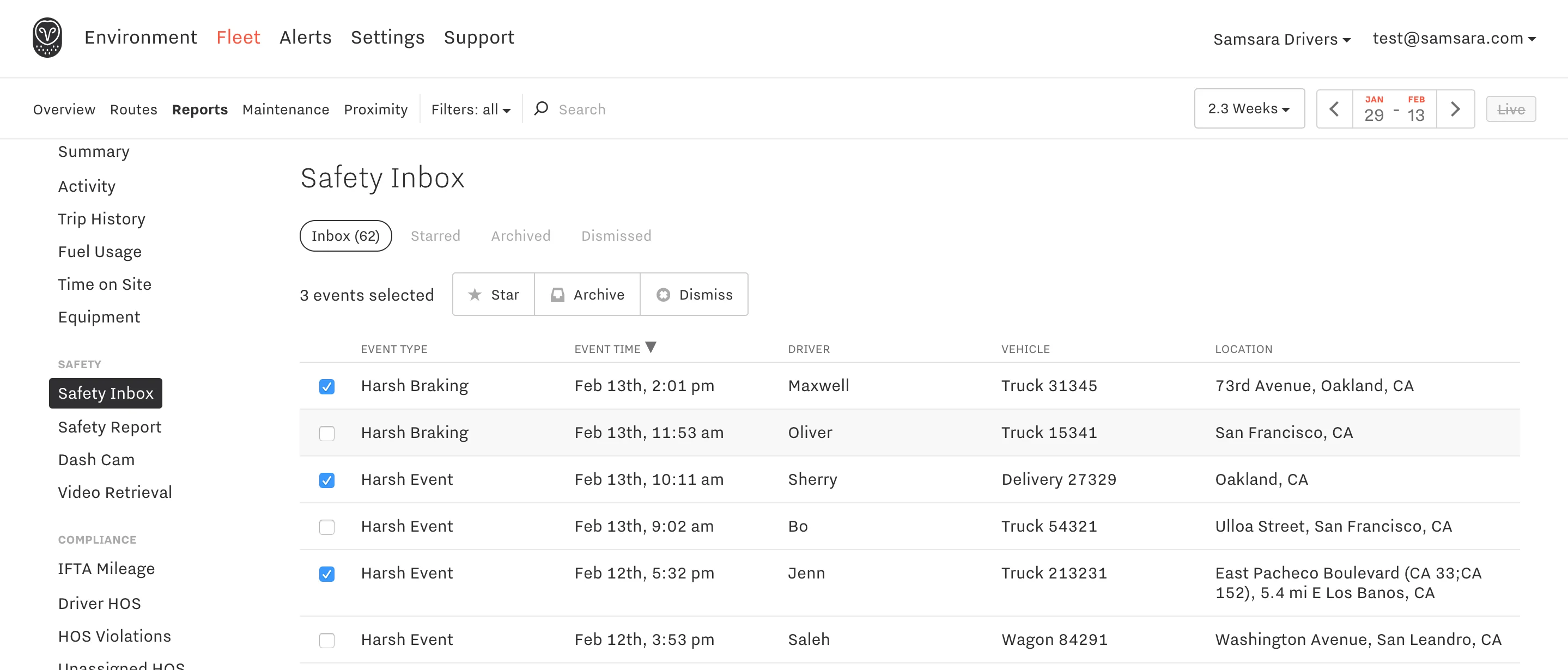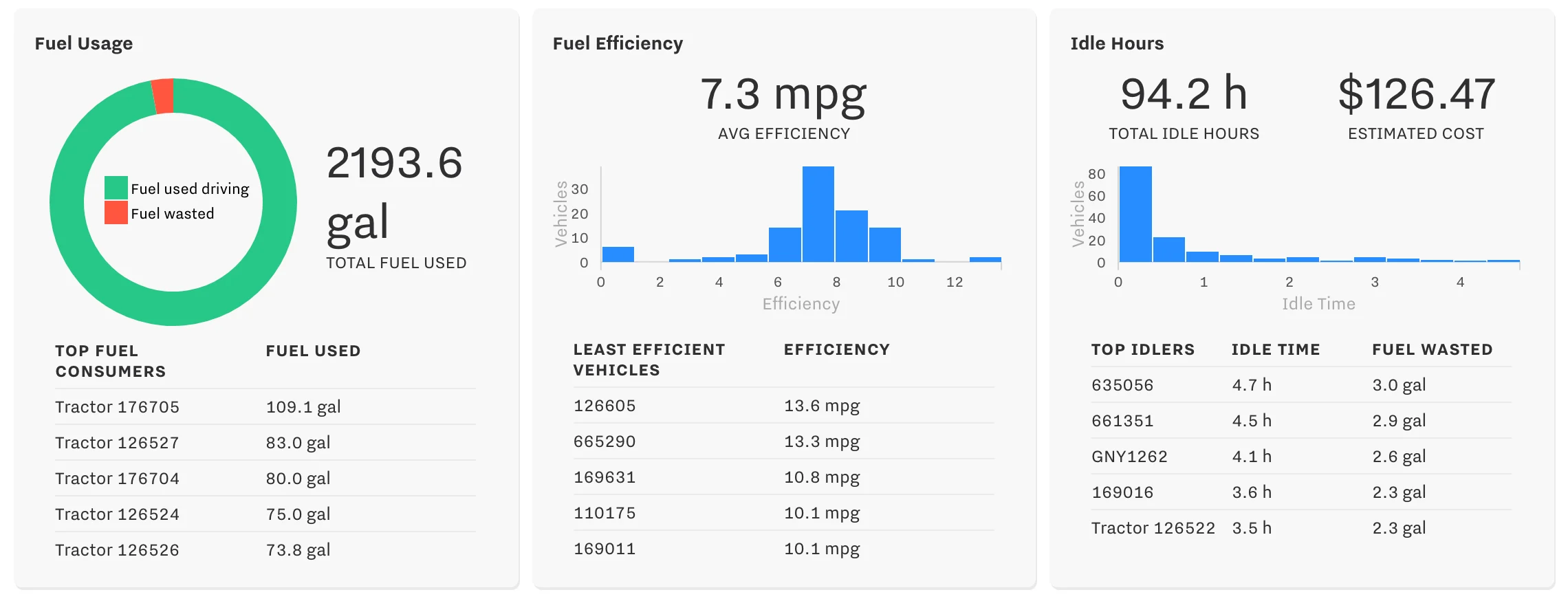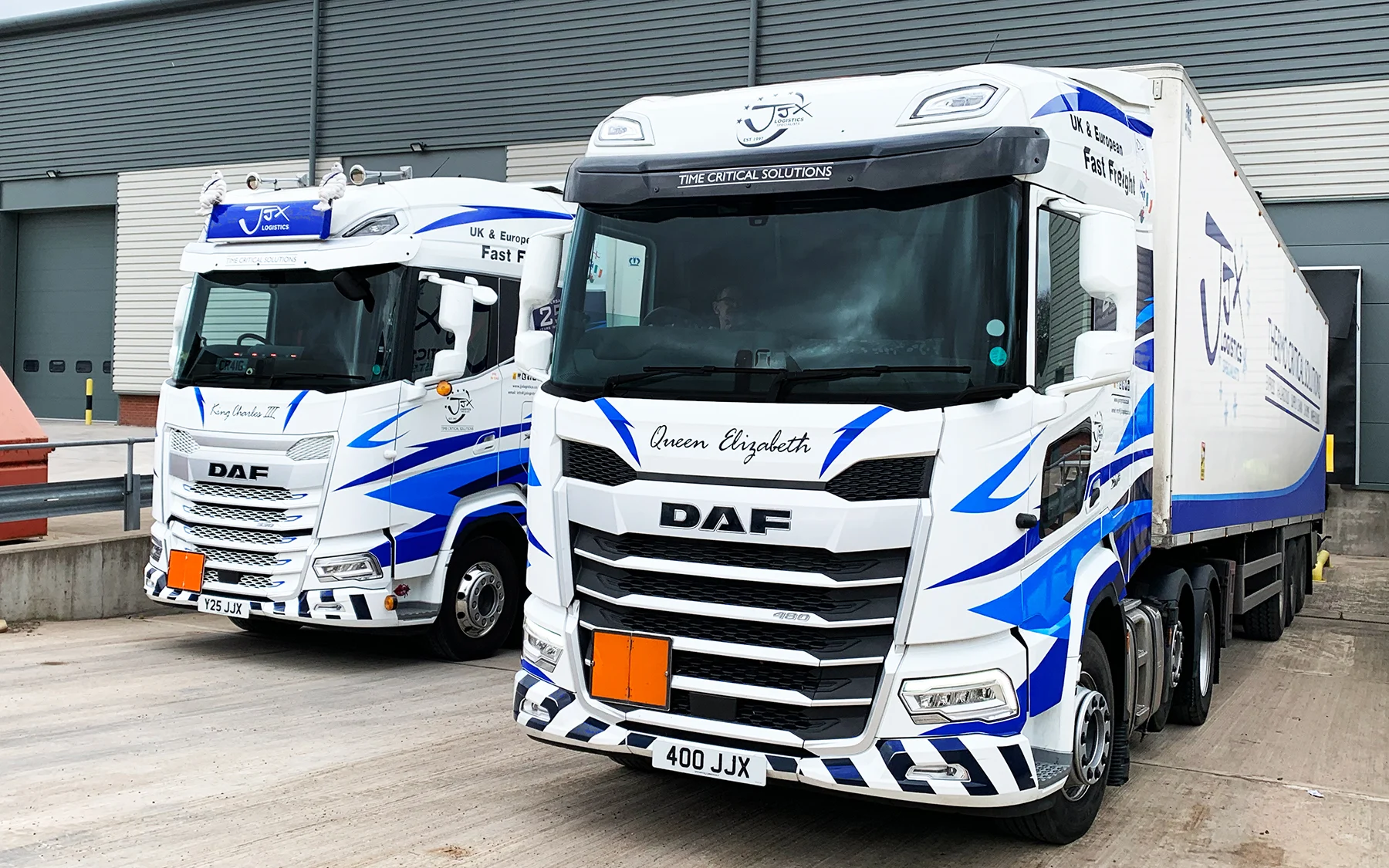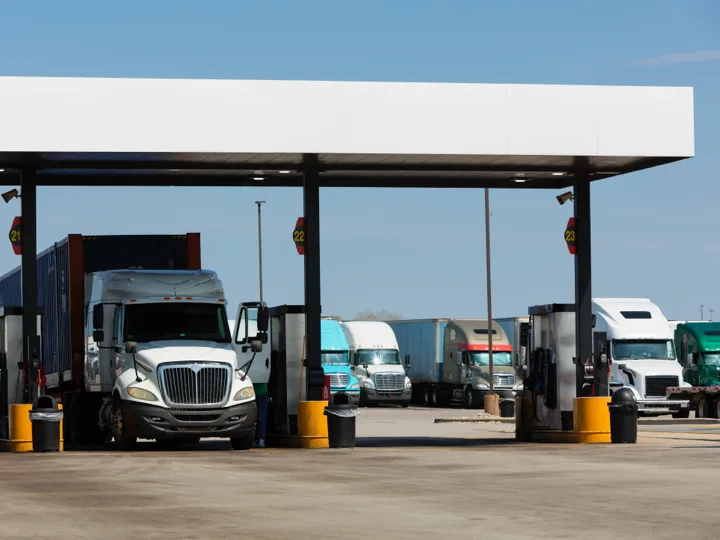
Get the latest from Samsara
Subscribe nowIt’s no secret that fuel is one of the biggest expenses for fleets. But just how much does your fleet fuel management affect your bottom line?
According to the American Trucking Associations, purchasing diesel fuel is the second highest expense for fleets, coming in at $90 billion for the trucking industry in 2016 and adding up to as much as 20 percent of total operating costs.
It’s also no secret that driver behavior has a direct impact on fuel efficiency. Research from the National Renewable Energy Laboratory found that by improving driver behavior, fuel usage drops by 5 to 10 percent, and in the case of aggressive drivers, by up to 20 percent. That’s a potential for $9 billion in savings industry wide!
So how do you set up a fleet fuel management system that helps you both optimize your fleet’s fuel usage and encourage fuel-saving driving habits?
Drive the speed limit
Driving the speed limit isn’t just about safety; it’s also an important factor in fuel mileage rates. Every vehicle has a speed or speed range where it reaches optimal fuel efficiency. In general, there’s a steep drop off in fuel economy past 50 miles per hour, comparable to paying an additional $0.20 per gallon of gas for every 5-mile-per-hour increase.

By encouraging your drivers to stick to posted speed limits, you’ll be promoting both fleet safety and better fleet fuel management. Technology platforms like Samsara can give you insight into the speed of all of your vehicles and even let you set up alerts in case a vehicle exceeds a specific speed or goes a certain amount above the speed limit.
Promote safer driving
Erratic, distracted, or aggressive driving all have a big impact on your business, in terms of both safety and savings. If your drivers are regularly slamming on the brakes or flooring the gas pedal, that’s not only putting your fleet at risk—it’s also money that’s slipping away. By implementing a fleet safety program and coaching your drivers on good driving practices, you’ll reduce wear and tear on your vehicles, accident risk, and fuel costs.

Technology is making it easier than ever to track these gas-guzzling incidents as part of your fuel management system and respond proactively. With Samsara’s integrated platform, instances of harsh braking and acceleration are automatically flagged, so you can identify your safest and riskiest drivers and provide one-on-one coaching as needed.
Eliminate engine idling
The biggest way to make an impact on your fleet fuel management is to eliminate engine idling. Idling a heavy-duty truck consumes 0.8 gallons of fuel per hour, and discretionary idling in the US consumes roughly 1 billion gallons of fuel every year. By limiting idling, fleets can save an estimated $6,000 per truck annually.

So how do you build idling reduction into your fuel management system? Driver awareness and training help, but getting visibility into the actual engine idling that occurs in your fleet allows you to take targeted action. Samsara, for example, details the number of idle hours per vehicle, the estimated cost, and the amount of fuel wasted, so you can make sure your fleet isn’t idling unnecessarily.
Plan routes wisely
Optimizing the routes your trucks take helps you avoid extra time on the road and improves your fleet fuel management. Planning your routes to avoid traffic and to take the most efficient path between stops significantly reduces both your mileage and fuel usage. And of course, when possible, combine trips to prevent unnecessary back and forth.

As you add new customers or change your stops, make sure to regularly review your routes to see where there’s room to improve. By looking into route performance, you can identify trips that are frequently ahead of or behind schedule and update your routes to save time and fuel.
Perform regular maintenance
Regular maintenance of your vehicles will keep everything running smoothly and fuel efficiently. Determine a consistent schedule to check your fleet’s tire pressure and wheel alignment. Tires that aren’t fully inflated don’t roll as easily, so it requires more fuel to keep them moving. Similarly, properly-aligned wheels on trucks and trailers minimize rolling resistance, enabling you to get more miles per gallon.

You also want to ensure your fleet’s engines are in good shape since an engine that isn’t running its best won’t be meeting its potential for fuel efficiency. Avoid untreated maintenance issues by addressing problems as soon as they happen—platforms like Samsara can send instant alerts for engine fault codes. Even better, catch issues before they arise (and before they affect your fuel efficiency) by setting up a preventative maintenance schedule based on vehicle engine hours, miles driven, or time period.
Get the latest from Samsara
Subscribe now















